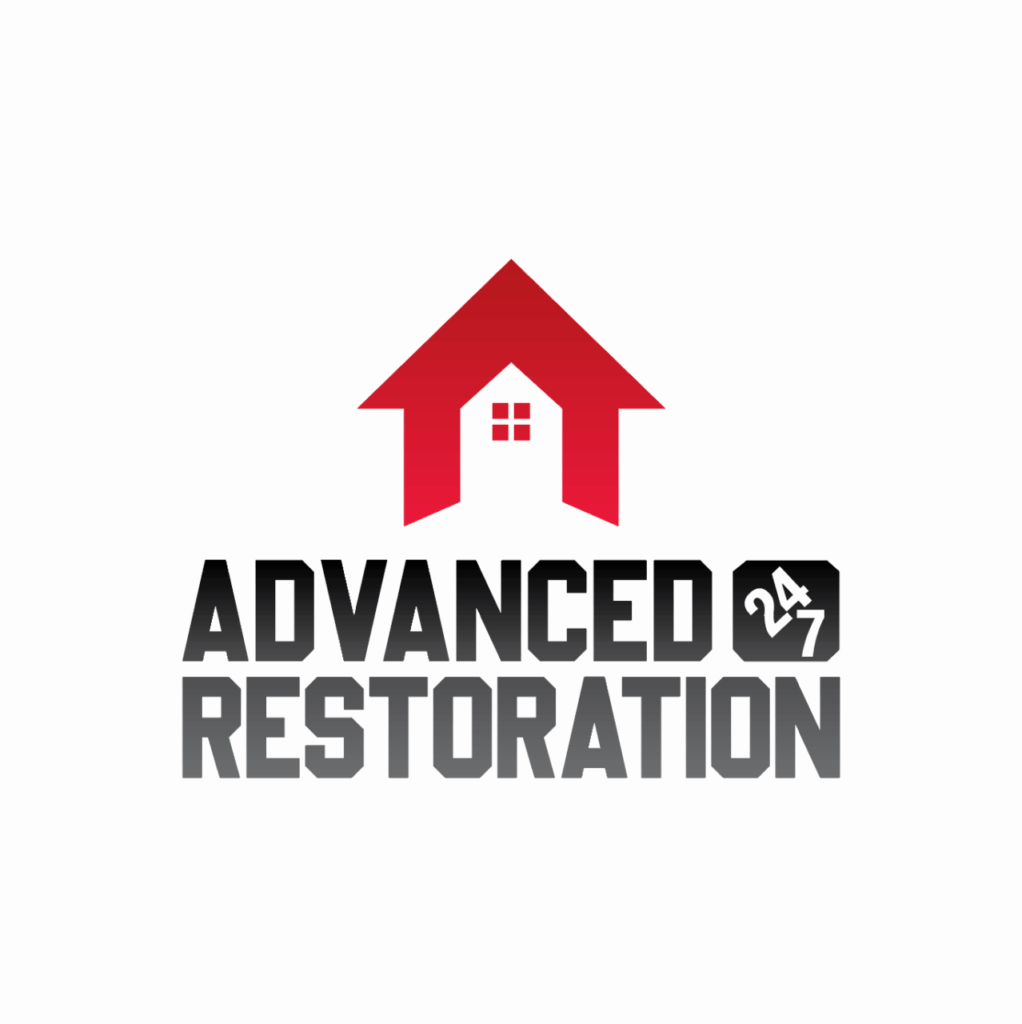Water leaks can be a homeowner’s nightmare, causing immediate damage and, possibly, long-term issues such as mold growth and structural damage. One of the most common questions homeowners have after experiencing a water leak is, “How long does it take for a water leak to dry out?” In this comprehensive guide by Advanced 24/7 Restoration, we’ll explore the factors affecting the drying time after a water leak, how to get rid of moisture effectively, and whether a one-time water leak can lead to mold growth.
Factors Affecting Drying Time After a Water Leak
Have you wondered what factors to consider when calculating water damage house repair costs? The time it takes for a water leak to dry out depends on several factors, and each situation is unique. Here are the primary factors that influence drying time:
1. Severity of the Leak
The severity of the water leak plays a crucial role in determining the drying time. A minor leak, such as a dripping faucet, will dry relatively quickly. However, a major leak or flooding can take significantly longer to dry out.
2. Type of Water
The type of water involved in the leak can impact drying time. Clean water from sources like a burst pipe is easier to dry than contaminated water, such as sewage or water from a flooded river. Contaminated water may require additional steps for proper cleanup and disinfection.
3. Environmental Conditions
The environmental conditions in your home also affect drying time. Factors like temperature, humidity, and airflow can expedite or prolong the drying process. Warmer temperatures and lower humidity levels typically promote faster drying.
4. Materials and Surfaces
Different materials and surfaces absorb and retain moisture differently. Porous materials like drywall, carpet, and insulation retain moisture longer than non-porous materials like tile or hardwood flooring.
5. Mold Growth
If mold has already begun to grow due to the water leak, it can significantly extend the drying time. Mold removal and remediation are essential to ensure a safe and healthy environment.
6. Professional Assistance
The expertise and equipment of water damage restoration professionals can expedite the drying process. Professionals have industrial-grade dehumidifiers, air movers, and moisture meters, allowing for efficient and thorough drying.
How to Get Rid of Moisture After a Leak
Getting rid of moisture after a water leak is critical to prevent further damage and mold growth. Here are the steps you can take to remove moisture effectively:
1. Safety First
Before starting any cleanup, ensure your safety by turning off electricity to the affected area to avoid electrical hazards. Additionally, wear appropriate personal protective equipment, including gloves and a mask.
2. Assess the Extent of the Damage
Evaluate the extent of the damage caused by the water leak. Identify affected areas, materials, and potential hazards like structural damage or mold growth.
3. Remove Standing Water
If there is standing water, use a wet/dry vacuum or a pump to remove it as quickly as possible. The longer water sits, the more damage it can cause.
4. Promote Airflow
Increase airflow in the affected area by opening windows and doors if weather permits. Use fans and dehumidifiers to enhance ventilation and facilitate drying.
5. Remove Damaged Materials
Remove damaged or saturated materials such as carpet, drywall, insulation, and furniture. These materials can retain moisture and become breeding grounds for mold.
6. Thoroughly Dry the Area
Use moisture meters to monitor the moisture levels in affected materials. Continue drying until moisture levels are within an acceptable range. This process can take several days to a few weeks, depending on the extent of the damage.
7. Inspect for Mold
Check for visible mold growth. If mold is present, consult with professionals for mold remediation. Trained experts should perform mold removal to ensure complete eradication.
8. Professional Assistance
Consider seeking professional help, especially for extensive water damage. Water damage restoration experts have the expertise and equipment to expedite drying and prevent mold growth effectively.
Can a One-Time Water Leak Cause Mold?
Yes, a one-time water leak can lead to mold growth if not properly addressed. Mold spores are present in the air and can settle on surfaces when conditions are favorable for growth. Even if it seems minor, a single instance of water intrusion can provide the moisture needed for mold spores to activate and multiply.
Mold can start growing within 24 to 48 hours after water exposure. It thrives in moist, dark, and warm environments. So, if a water leak isn’t thoroughly dried out and affected materials aren’t properly cleaned and treated, mold can take hold and spread quickly.
To prevent mold growth after a water leak, it’s crucial to act swiftly and follow the appropriate cleanup and drying procedures. If you suspect mold growth, consult with professionals specializing in mold remediation to ensure safe and thorough removal.
How Long Does It Take for Water to Dry on a Floor After a Leak?
The drying time for a water-damaged floor varies depending on several factors, including the type of flooring and the severity of the leak. Here’s a general guideline for different types of flooring materials:
1. Hardwood Floors
Hardwood floors are porous and absorb water, leading to warping and cupping. Drying hardwood floors typically takes at least several days to a few weeks. Using dehumidifiers and fans can expedite the process.
2. Laminate and Engineered Wood Floors
Laminate and engineered wood floors are less porous than solid hardwood, making them less susceptible to water damage. Drying time for these floors is generally shorter, ranging from a few days to weeks.
3. Tile Floors
Tile floors with proper grouting and sealing are relatively water-resistant. In most cases, they can be dried out within a few days with proper ventilation and dehumidification.
4. Carpet
Carpets can retain water and moisture for an extended period. Drying carpeted floors may take several days to a few weeks, depending on the extent of saturation. Professional carpet cleaning and treatment may also be required to prevent mold growth.
How Do You Dry Out Walls After a Water Leak?
Drying out walls after a water leak prevents structural damage and mold growth. Here’s how you can effectively dry out walls:
1. Safety Precautions
Ensure your safety by turning off electricity to the affected area and wearing appropriate protective gear.
2. Assessment
Assess the extent of the damage by inspecting the walls for water stains, swelling, and moisture levels. Identify affected areas.
3. Remove Damaged Materials
Remove wet or damaged materials such as insulation, drywall, and baseboards. Cutting small openings in the walls can help with ventilation and drying.
4. Increase Airflow
Use fans and open windows to promote airflow within the affected area. Improved ventilation expedites the drying process.
5. Dehumidification
Use dehumidifiers to remove excess moisture from the air. Dehumidifiers are highly effective in reducing humidity levels, which accelerates drying.
6. Monitor Moisture Levels
Regularly monitor moisture levels in the walls using moisture meters. Continue drying until moisture levels are within an acceptable range.
7. Professional Assistance
Consider consulting with water damage restoration professionals for extensive water damage or if you’re unsure about the drying process. They have the expertise and equipment to ensure thorough drying and prevent mold growth.
How Do You Dry a Ceiling After a Water Leak?
Drying a ceiling after a water leak follows similar principles to drying walls but may require extra caution due to the risk of structural damage. Here’s how to dry a ceiling effectively:
1. Safety Precautions
Ensure safety by turning off electricity to the affected area and avoiding standing on or applying pressure to the ceiling.
2. Assessment
Inspect the ceiling for water stains, sagging, and moisture levels. Identify the extent of the damage.
3. Remove Damaged Materials
Remove any damaged ceiling materials, such as wet drywall or insulation, for better ventilation and drying.
4. Increase Airflow
Use fans and open windows to enhance airflow within the affected area. Improved ventilation is crucial for efficient drying.
5. Dehumidification
Employ dehumidifiers to reduce humidity levels in the room. Lower humidity accelerates the drying process.
6. Monitor Moisture Levels
Regularly use moisture meters to monitor moisture levels in the ceiling. Continue drying until moisture levels are within an acceptable range.
7. Professional Assistance
Consult with water damage restoration experts for extensive ceiling damage or if unsure about the drying process. They have the expertise to assess the situation and ensure thorough drying while preventing structural issues.
Summary
The time it takes for a water leak to dry out varies based on several factors, including the severity of the leak, environmental conditions, and the materials involved. Swift and thorough action is essential to prevent further damage and mold growth. Remember that mold can begin to grow within 24 to 48 hours after water exposure, emphasizing the importance of quick response and proper drying techniques.
If you’re facing a water leak, especially one that involves extensive damage, it’s advisable to seek professional assistance from experts like Advanced 24/7 Restoration. Professionals have the knowledge, equipment, and experience to expedite drying, minimize risks, and ensure your home is safe and dry again. Don’t underestimate the importance of prompt and effective water leak recovery to protect your property and health.
Advanced 24/7 Restoration’s mission is to provide unparalleled care and support to our valued clients. Delivering the best solutions for your property restoration needs. Our vision is to be the top-rated damage restoration company in Denver, known for our exceptional services, professionalism, and dedication to customer satisfaction. Water damage, fire damage, flood damage, and more.
- This author does not have any more posts


